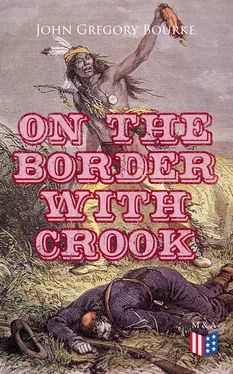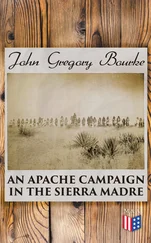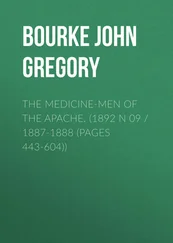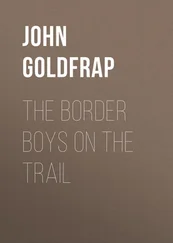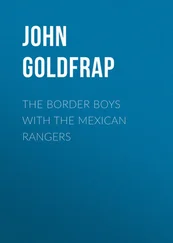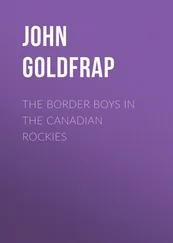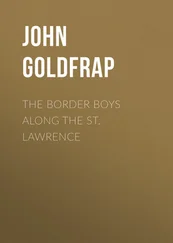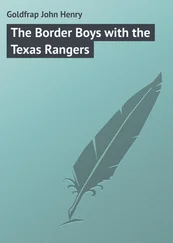1 ...8 9 10 12 13 14 ...31 Our troop was peculiarly situated. It had a second mount of ponies, captured from the Apaches against whom Cushing had done such good service in southwestern Texas. Orders came down in due time from San Francisco to turn them in and have them sold by the quartermaster; but until these orders came—and owing to the slowness of mail communications in those days, they did not come for several months—we had the advantage of being able to do nearly twice as much work as troops less fortunately placed.
The humdrum life of any post in Arizona in those days was enough to drive one crazy. The heat in most of them became simply unendurable, although here the great dryness of the atmosphere proved a benefit. Had the air been humid, very few of our garrison would now be alive to tell of temperatures of one hundred and twenty and over, and of days during the whole twenty-four hours of which the thermometer did not register below the one hundred notch.
There was a story current that the heat had one time become so excessive that two thermometers had to be strapped together to let the mercury have room to climb. That was before my arrival, and is something for which I do not care to vouch. I give the story as it was given to me by my friend, Jack Long, of whom I am soon to speak.
In every description of Arizona that I have ever seen, and I claim to be familiar with most if not all that has appeared in print, there occurs the story of the soldier who came back to Fort Yuma after his blankets, finding the next world too cold to suit him. I make reference to the story because many worthy people would find it hard to believe that a man had been in Arizona who did not tell this story in his first chapter, but it has grown to be such a mouldy military chestnut that I may be pardoned for omitting it.
There were all kinds of methods of killing the hours. One that interested everybody for a while was the battles which we stirred up between the nests of red and black ants, which could be found in plenty and of great size close to the post. I have seen the nests in question three or four feet high, and not less than six feet long, crowded with industrious population. The way to start the battle was to make a hole in each nest and insert cans which had lately been emptied of peaches or other sweets.
These would soon fill with the battalions of the two colors, and could then be poured into a basin, where the combat à outrance never failed to begin at once. The red ants were much the braver, and one of that color would tackle two, and even three, of the black. If the rumpus lasted for any length of time, queens would appear, as if to superintend what was going on. At least, that was our impression when we saw the large-bodied, yellow-plush insects sallying from the depths of the nests.
We had not been back in the post a week before we had something to talk about. A Mexican who was doing some work for the Government came up to confer with the commanding officer as to details. He left the adjutant’s office before mid-day, and had not gone one thousand yards—less, indeed, than rifle-shot—from the door, when an Apache, lurking in ambush behind a clump of palmilla, pierced him through and through with a lance, and left him dead, weltering in his own blood. To attempt pursuit was worse than useless, and all we could do was to bury the victim.
It was this peculiarity of the Apaches that made them such a terror to all who came in contact with them, and had compelled the King of Spain to maintain a force of four thousand dragoons to keep in check a tribe of naked savages, who scorned to wear any protection against the bullets of the Castilians, who would not fight when pursued, but scattered like their own crested mountain quail, and then hovered on the flanks of the whites, and were far more formidable when dispersed than when they were moving in compact bodies. This was simply the best military policy for the Apaches to adopt—wear out the enemy by vexatious tactics, and by having the pursuit degenerate into a will-o’-th’-wisp chase. The Apaches could find food on every hillside, and the water-holes, springs, and flowing streams far up in the mountains were perfectly well known to them.
The Caucasian troops, of whatever nationality, would wander about, half-crazed with thirst, and maddened by the heat of the day or chilled by the cold winds of night in the mountains, and unable to tell which plants were of value as food and which were not.
The Apache was in no sense a coward. He knew his business, and played his cards to suit himself. He never lost a shot, and never lost a warrior in a fight where a brisk run across the nearest ridge would save his life and exhaust the heavily clad soldier who endeavored to catch him. Apaches in groups of two and three, and even individual Apaches, were wont to steal in close to the military posts and ranchos, and hide behind some sheltering rock, or upon the summit of some conveniently situated hill, and there remain for days, scanning the movements of the Americans below, and waiting for a chance to stampede a herd, or kill a herder or two, or “jump” a wagon-train.
They knew how to disguise themselves so thoroughly that one might almost step upon a warrior thus occupied before he could detect his presence. Stripped naked, with head and shoulders wrapped up in a bundle of yucca shoots or “sacaton” grass, and with body rubbed over with the clay or sand along which it wriggled as sinuously and as venomously as the rattler itself, the Apache could and did approach to within ear-shot of the whites, and even entered the enclosures of the military camps, as at Grant and Crittenden, where we on several occasions discovered his foot-prints alongside the “ollas,” or water-jars.
On such occasions he preferred to employ his lance or bow, because these made no sound, and half or even a whole day might elapse before the stiffened and bloody corpse of the herder or wagoner would be found, and the presence of Indians in the vicinity become known. At least twenty such examples could be given from my own knowledge, occurring at Prescott, Tucson, Camp Grant, Camp Crittenden, Tres Alamos, Florence, Williamson’s Valley, and elsewhere. They were regarded as the natural features of the country, and every settler rather expected them as a matter of course. Well did Torquemada, the Spanish writer (A. D. 1709), deplore the inability of the Spaniards to make headway against this tribe of naked savages.
Californians old enough to remember the days when San Francisco had a Mining Stock Exchange, may recall the names of Lent and Harpending, who were two of the most prominent of the members. An expedition, equipped at the expense of these gentlemen, made its way into Arizona to examine the mining “prospects” discovered in the vicinity of Fort Bowie. They had to come overland, of course, as there were no railroads, and wagons had to be taken from Los Angeles, the terminal point of steamer navigation, unless people preferred to keep on down to San Diego, and then cross the desert, via Fort Yuma, and on up the dusty valley of the Gila River to Tucson or Florence. The party of which I am now speaking was under the command of two gentlemen, one named Gatchell and the other Curtis, from the Comsytock Mines in Nevada, and had reached and passed the picturesque little adobe town of Florence, on the Gila, and was progressing finely on the road toward Tucson, when “Cocheis,” the bold leader of the Chiricahuas, on his march up from Sonora to trade stolen horses and have a talk with the Pinals, swooped down upon them. It was the old, old Arizona story. No one suspected danger, because there had been no signs of Indians on the trip since leaving the villages of the peaceful Pimas, on the Gila, near Maricopa Wells.
It was a perfect duplication of the Kennedy-Israel affair, almost to the slightest details. Mr. Curtis received a bad wound in the lungs. Mr. Gatchell was also wounded, but how severely I cannot remember, for the very good reason that there was so much of that kind of thing going on during the period of my stay at Camp Grant that it is really impossible to avoid mixing up some of the minor details of the different incidents so closely resembling one another.
Читать дальше
